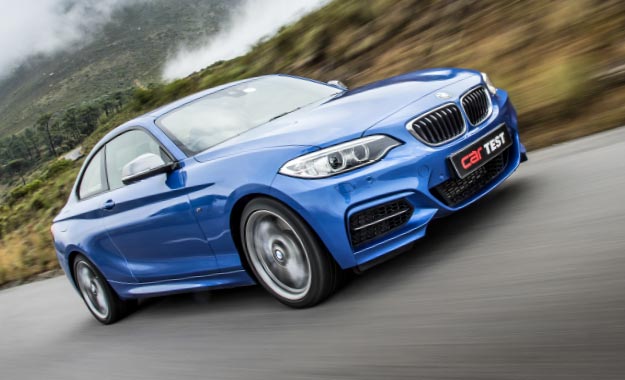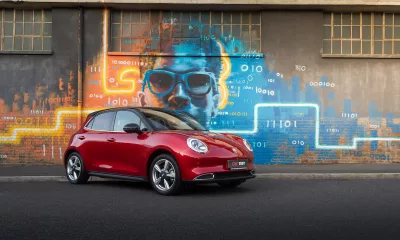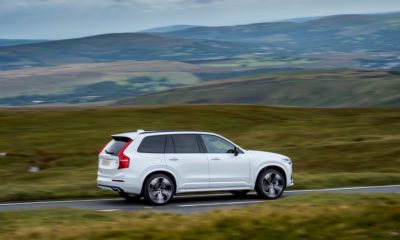LONG before the Munich-based firm bowed to marketing pressures and released vehicles with raised ride heights, shared platforms and confusing badge designations, BMW was winning the hearts of driving enthusiasts around the world with its penchant for creating powerful, compact rear-wheel-driven sedans and coupés – with relatively affordable price tags – that celebrated the sheer pleasure of driving.
Yes, without the likes of the soon-to-be-increased X family and four-door versions of two-door versions (of four-door versions), BMW wouldn’t be able to maintain its position among the leading automotive brands in the world but, thankfully, every now and then a propeller-badged vehicle emerges as a reminder of what this Bavarian manufacturer is capable.
The M235i is such a vehicle.
In line with BMW’s modern naming strategy, the new (F22) 2 Series replaces the outgoing (E82) 1 Series Coupé. Longer (72 mm), wider (26 mm) and lower (5 mm) than the model it supersedes, another significant gain particularly relevant to the M235i is the 32 mm increase in wheelbase. While the hottest Two (for now) hasn’t necessarily gained mass through its transformation from a 135i, a kerb weight, as tested, of
1 552 kg leaves room for a lighter-on-its-feet M2 version.
It’s not to say BMW’s famed M GmbH division hasn’t already had an influence on the making of the 235i but, strictly speaking, this particular model falls under the M Performance banner (essentially an answer to Audi’s hot-but-not-searing S range). As a result, a number of M-tuned parts, including suspension componentry, brakes and, importantly, engine upgrades feature on the 235i.
With 240 kW available at 5 800 r/min, the new N55HP turbocharged inline six-cylinder engine delivers 50 N.m more torque (450 N.m in total) than the outgoing M3. What’s more, it’s available all the way from 1 300 to 4 500 r/min. And, while it stands to reason that most customers will opt for the convenience (and ultimate performance benefits) of the eight-speed automatic transmission, it’s the six-speed manual ‘box that will have enthusiasts (CAR’s testers included) fondly remembering a time when the E30 325iS roamed the streets.
Like the outgoing 135i Coupé and 1M, the M235i’s sense of purpose is underlined by the presence of a (leather-bound) thick-rimmed steering wheel in a neat but uninspiring cabin. A generous range of height adjustment on the driver’s seat afforded even our tallest testers a low-slung driving position, while the stubby gearshift lever is never far from reach.
While the swept roofline cramps taller rear occupants, we were pleasantly surprised by the relative usability of the aft seats.
Despite a firmer default suspension setup than that of the M135i hatch, the ride quality of the hottest Two is one of the most compliant we’ve experienced in the new batch of compact sedans. And, while adaptive damping is available as an extra-cost option, we would comfortably leave this box unticked; the standard setup is more than capable of performing a dual role between everyday commute and weekend warrior.
Where the slightly notchy manual transmission and weighted clutch could prove tiresome in traffic, they make sense once the road clears and the M235i is set free. The welcome flexibility of the six-cylinder is complemented by the euphonic howl from the twin tailpipes as the revs near (and pass) the 7 000 r/min redline. Shift efficiently from first to second gear and BMW claims the manual M235i will reach 100 km/h from standstill in 5,0 seconds. We achieved an excellent 5,40 seconds on our test strip. While the slick eight-speed automatic transmission option arguably offers a more rounded ownership experience, the manual version is the one we’d have for the sheer joy it provides.
We recorded a supercar rivalling best time of just 2,58-seconds (and a 10-stop average of 2,70-seconds) during the 100 km/h to zero braking test.
There’s a welcome balance and poise to the M235i that allows drivers of varying experience levels to confidently explore its (and their) limits. Toggle between comfort, sport and sport+ (eco pro is also available) driving modes and, apart from changing the mapping (sensitivity) of the throttle and steering, the traction control accordingly allows more leniency. Even with this safety system deactivated, any loss of traction is timeously communicated through the driver’s seat.
Where the 135i Coupé featured hydraulically assisted power steering, the M235i moves to an electric, variable sports system. As with many examples of this modern technology, there’s a definite loss of ultimate feel through the wheel. But, it certainly doesn’t detract from the precision and confidence with which the M Performance-fettled Two turns in and maintains its line. The fitment of 18-inch Michelin Pilot Sport rubber also plays a role in that regard.
An optional limited slip differential offered in other markets is not available to South African buyers at this stage.
Test Summary
Pressures from (financially) important markets such as China and the US have seen manufacturers blur the lines in terms of product delivery… As this issue hits the shelves, we’ll be attending the global launches of the niche-bending X4 SUV and the 4 Series Gran Coupé.
In light of this, it’s pertinent that BMW, with its proud heritage of drivers’ cars, continues the development of vehicles that remain true to the brands’ roots. The imminent M4 and its M3 sibling certainly fall into that category, but while the former is indicated to cost just under R1 million and its V8-engined M6 sibling demands a significantly higher price, the M235i represents a veritable performance bargain in terms of two-door BMW sportscars.
Not only does it personify everything that’s great about BMW, but if we got the chance to compare the M235i directly against other headlining performance vehicles in the market, the newcomer from Munich could prove the best bang-for-buck sportscar of the lot.
Click here to watch our track test of the BMW M235i Coupé.










